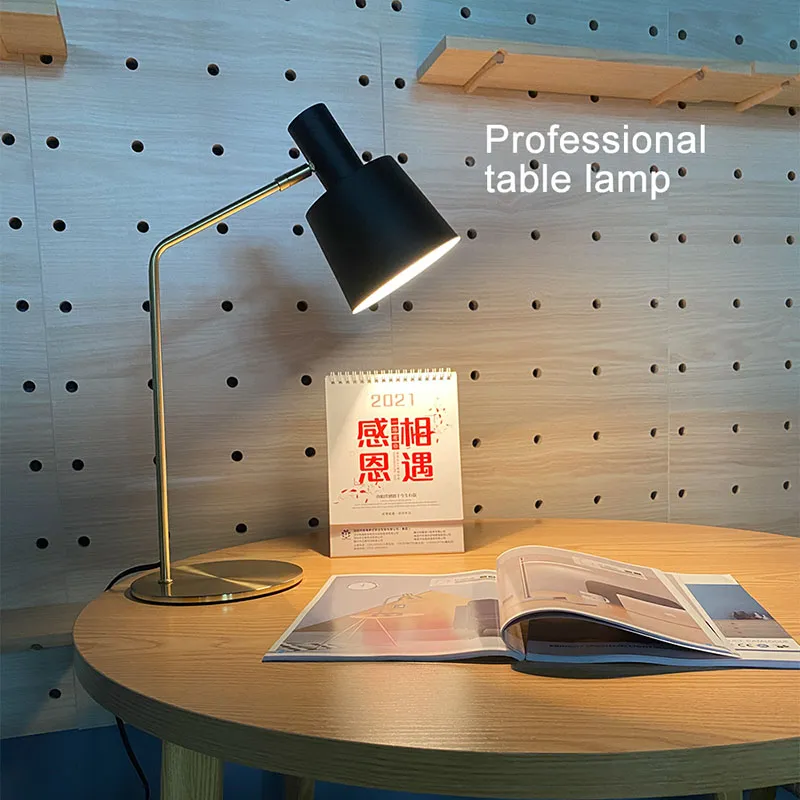An excellent reading desk light needs to have excellent performance in terms of illumination and uniformity, color rendering index, color temperature, blue light hazards, strobe, adjustment function and other humanized designs. These performances together constitute the core competitiveness of the reading desk lamp, providing users with a comfortable and healthy lighting environment. The following is a detailed summary of these performances:

Illuminance: Illuminance refers to the intensity of light emitted by the desk lamp. In order to ensure comfort when reading, the illumination of the reading desk light should meet certain standards to ensure that the light is bright enough.
Illuminance uniformity: Illuminance uniformity refers to whether the light distribution within the illumination range of the desk lamp is uniform. Good illumination uniformity can avoid visual fatigue caused by too strong or too weak light. Therefore, it is crucial to choose a reading desk light with excellent illumination uniformity.
The color rendering index (Ra) is used to judge the degree of restoration of the true color of an object by a light source. The closer the Ra value is to 100, the stronger the color restoration ability of the object, and the easier it is for the human eye to distinguish the color of the object. For reading desk light, the color rendering index is recommended to be above Ra90 to ensure that the color of the book can be accurately restored when reading.
Color temperature is the intuitive visual perception of the color of light by the human eye. The color temperature value determines the comfort of the light. A good desk lamp can generally be adjusted between 3000K and 5300K. If used for reading books, the color temperature is recommended to be 4000K natural light. The light at this color temperature is bright and soft, suitable for long-term reading.
Blue light is part of the visible light in nature, with a wavelength between 400500 nanometers. Among them, blue-violet light with a wavelength range of 415455nm can have a damaging effect on retinal cells. Therefore, the reading desk light needs to have a blue light protection function to reduce damage to the eyes. Choosing a desk lamp with RG0 level is the best choice because it will not cause eye damage.
Stroboscopic refers to the frequency of changes in light intensity. Stroboscopic is prone to cause visual fatigue. At present, almost all desk lamps have achieved the effect of exemption-level stroboscopic effect, also known as no visible flicker. Therefore, when choosing a reading desk light, you should ensure that it has the characteristic of no visible flicker.
Brightness adjustment: The reading desk light should have a brightness adjustment function to meet different reading environments and personal needs. By adjusting the brightness, you can ensure that the light is neither too strong nor too weak, thereby protecting your eyes.
Color temperature adjustment: In addition to brightness adjustment, some reading desk lights also have a color temperature adjustment function. By adjusting the color temperature, you can adapt to different reading times and scenes, such as the reading needs during the day and at night may be different.
Energy-saving performance: Choosing a reading desk light with energy-saving performance can reduce energy consumption while reducing the burden on the environment. LED light sources have the advantages of long life and low power consumption, making them an ideal choice for reading desk lamps.
Durability: The reading desk light should have good durability to ensure stability and reliability during long-term use. Choosing high-quality materials and manufacturing processes can improve the durability of the desk lamp.
Humanized design: The design of the reading desk light should take into account the needs and comfort of the user. For example, the adjustability of the lamp arm and lamp head, touch or gesture control functions, etc. can enhance the user experience.